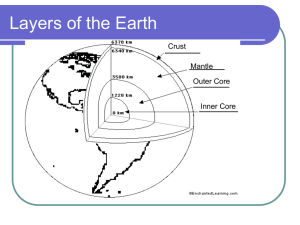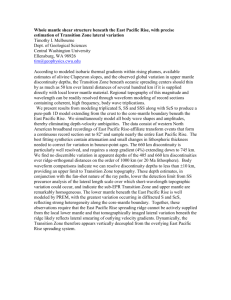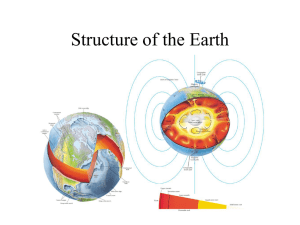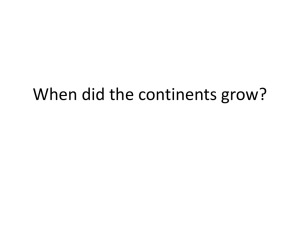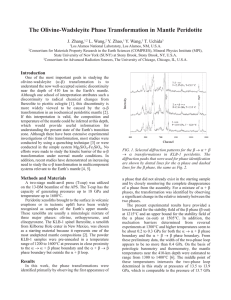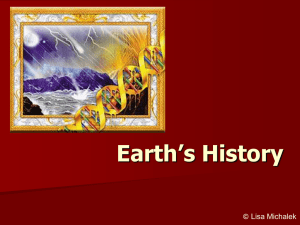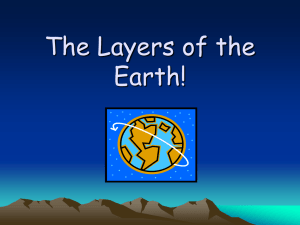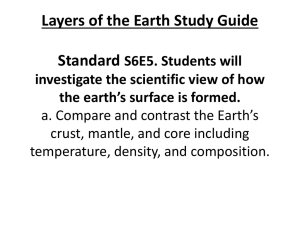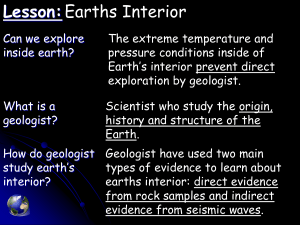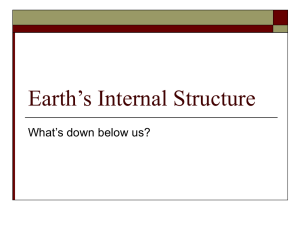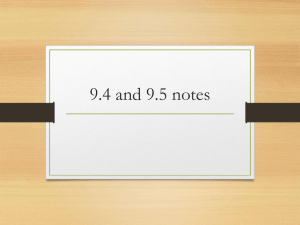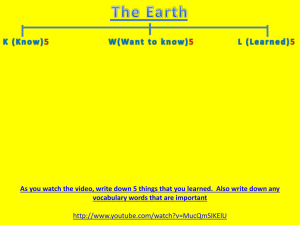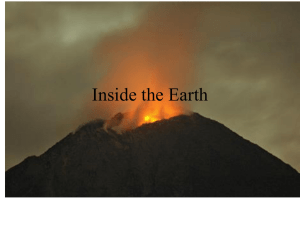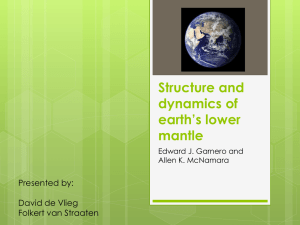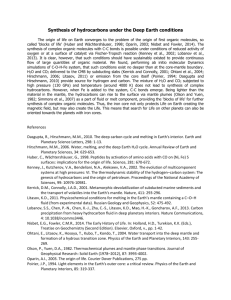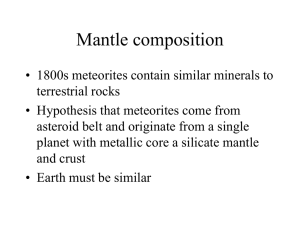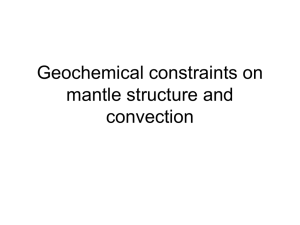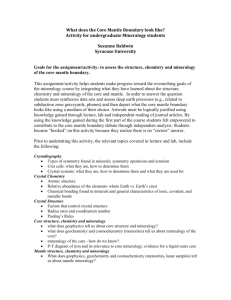lecture2
advertisement
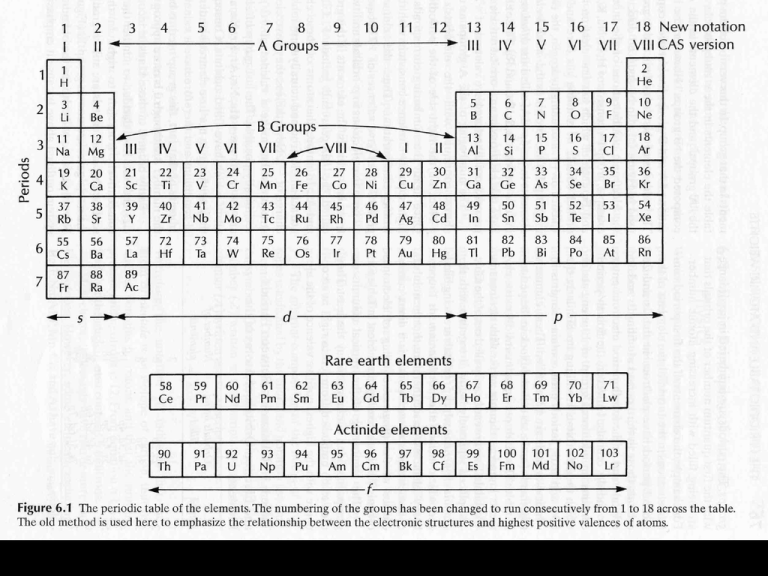
Structure and chemistry of the Earth Today’s topic: The chemistry of Earth’s mantle and crust Iron meteorite Meteorite composition tells us about the chemistry of the early universe and Earth’s core and mantle Chondrite meteorite Most meteorite originate from asteroid belt, but many are being identified from the Moon and Mars Moho Core-mantle boundary (Gutenberg discontinuity) Inner core-outer core boundary (Lehmann discontinuity) Moho -discovery published c. 1910-12 by a Yugoslavian after a 1906? quake in Europe Core-mantle boundary - discovered by Oldham after M8 in 1896 in Assam, India Inner core-outer core boundary - discovered in the 1930s by a Dane • Crust synonymous with lithosphere until the 1950s • 440 km discontinuity = change in olivine structure (spinel or ringwoodite phase) • 660 km discontinuity = transform all minerals into perovskite and minor Fe-Mg oxide (Mg-wustite) Upper mantle-lower mantle boundary Mantle plumes thought to originate at D” layer (otherwise called a ‘mantle upwelling’) New science! The inner core rotates faster than the earth Mantle composition Estimated from ultramafic xenoliths and stony meteorites, geophysical requirements for density and seismic velocities, heat production from decay of U, Th, and K, and basaltic magmas must be able to form from partial melting under mantle P-T conditions Some mantle rocks have been recovered from deep ocean trenches and by dredging Pyrolite (3 peridotites:1 basalt) Most abundant elements in the continental crust Element O Si Al Fe Ca Mg Na K Ti Weight % 45.5 26.8 8.4 7.06 5.3 3.2 2.3 0.90 0.5 The andesite model for continental crust: 1 mafic:5 felsic results in a chemical composition similar to diorite or andesite


